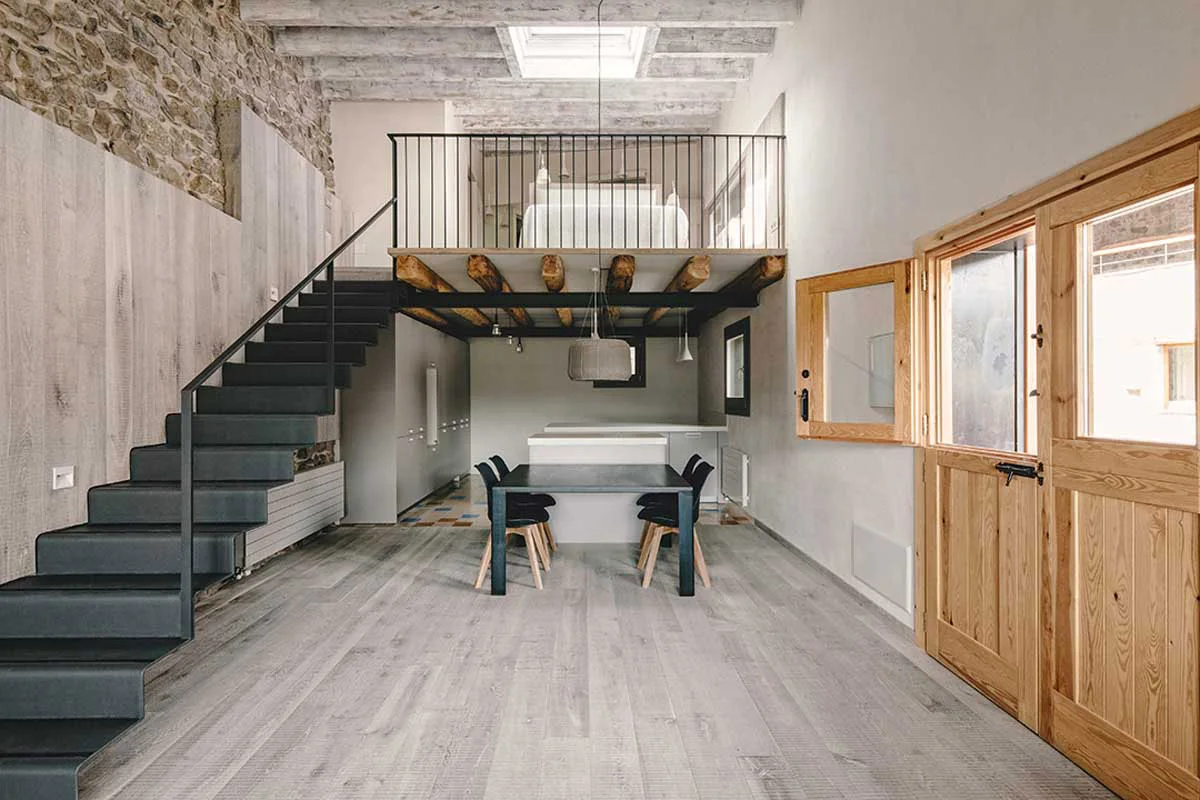Looking to add extra space and a touch of architectural flair to your home or business without the cost of a major renovation? Mezzanine floors offer a versatile and budget-friendly solution, allowing you to unlock the hidden potential of your space.
Mezzanine Floor Design: Double Your Space, Not Your Footprint
Mezzanine floors are essentially free-standing structures built within your existing space, creating a whole new level and effectively doubling your usable floor area. This innovative design trick is especially valuable in urban environments where space is at a premium. Whether you need an extra bedroom, a dedicated home office, or a stylish showroom for your retail business, mezzanine floors offer endless possibilities.
Here’s why mezzanines are gaining popularity:
- Maximize Vertical Space: Mezzanine floors capitalize on unused vertical space, adding valuable square footage without the need for costly expansions.
- Versatility at its Finest: From stylish apartments to efficient warehouses, mezzanine floors seamlessly adapt to any space and purpose.
- A Touch of Grandeur: Mezzanines instantly elevate the architectural appeal of a space, creating a sense of openness, grandeur, and visual interest.
- Enhanced Functionality: They provide additional space for offices, storage, retail displays, or even cozy reading nooks.
- Budget-Friendly Expansion: Compared to traditional renovations or moving, mezzanine floors offer a cost-effective solution for growing businesses or families needing extra room.
Key Takeaways:
- Double your usable space without expanding your building footprint.
- Adaptable to your exact requirements and design aesthetic.
- Improve layout, organization, and workflow within your space.
- Elevate the look and feel, adding a touch of architectural drama.
- Provide a budget-friendly alternative to major renovations.
What are the Benefits of Mezzanine Floor Design?
Mezzanine floors offer a range of benefits that make them a smart choice for both residential and commercial spaces:
Turn Wasted Space into Usable Space: Imagine transforming that empty void above your living room into a cozy loft bedroom or turning an underutilized corner of your warehouse into a productive office space. Mezzanine floors make it possible!
Tailor-Made and Budget-Friendly: One of the biggest advantages of mezzanine floors is their adaptability. They can be custom-designed to fit your exact needs and style, whether you need heavy-duty steel for industrial use or sleek wood for a modern office.
A Smooth-Running Space: Mezzanine floors introduce an extra layer of organization and efficiency. Imagine a well-organized office where every department has its dedicated space or a warehouse with streamlined inventory flow.
Aesthetics Matter: Let’s be honest, a visually appealing space is simply more enjoyable to be in. Mezzanine floors enhance the aesthetic appeal by adding visual interest, creating a sense of spaciousness, and introducing intriguing sightlines.
Exploring Different Types of Mezzanine Floors
Just like choosing the perfect sofa, selecting the right type of mezzanine floor is crucial for maximizing its functionality and aesthetics. The two main types of mezzanine floors are:
1. In-Plane Design:
- Joists (horizontal support beams) are laid parallel to the bearers (main support beams), similar to pencils placed side-by-side on top of rulers.
- Ideal for lower ceiling heights as it minimizes the overall height added to the space.
- Can be a more expensive option due to the structural requirements.
2. Joist Over Bearer Design:
- Joists are laid perpendicular to the bearers, creating a structure similar to a log cabin.
- Offers more headroom underneath the mezzanine, creating an airier and more open feel.
- Generally, a more cost-effective option compared to the in-plane design.
Choosing the Right Design:
The choice between in-plane and joist over bearer designs depends on your specific needs:
- Ceiling Height: If you have limited ceiling height, an in-plane design might be your only option.
- Budget: For those on a tighter budget, the joist over bearer design offers a more cost-effective solution.
- Aesthetic Preference: Consider the desired aesthetic, with in-plane offering a sleeker look and joist over bearer providing a more traditional feel.
Beyond the Basics:
In addition to the two main types, mezzanine floors can be further customized with various features:
- Independent Mezzanine: A freestanding structure that can be moved or reconfigured as needed, ideal for renters or those who like to change their space frequently.
- Rack-Supported Mezzanine: Designed to maximize storage space, often used in warehouses and industrial settings.
- Single-Level Mezzanine: A classic design that adds one additional level to your space.
- Multi-Level Mezzanine: For maximizing vertical space, multi-level mezzanines create multiple floors, adding significant square footage.
Important Considerations:
- Mezzanine Floor Height: The height of your mezzanine will impact its usability, aesthetics, and building code compliance. Be sure to consult with a professional to determine the optimal height for your space. (Learn more about mezzanine floor height.)
- Minimum Free Height: Building codes dictate a minimum free height (the vertical clearance below the mezzanine) to ensure safety and accessibility. (Learn more about minimum free height for mezzanines.)
- Mezzanine Height Regulations: Local building codes may have specific requirements for mezzanine height. Check with your local building department to ensure compliance. (Learn more about mezzanine height regulations.)
Mezzanine Floor Design Considerations: Costs
While mezzanine floors are generally more cost-effective than major renovations, several factors can influence the overall expense. Understanding these factors can help you budget effectively and avoid surprises:
Size Matters: Just like any construction project, the larger the mezzanine floor, the higher the cost. Carefully consider your space requirements to determine the most cost-effective size.
Material Selection: The choice of materials significantly impacts the cost. Steel offers strength and durability but comes at a higher price point than wood. Consider your budget, aesthetic preferences, and structural needs when selecting materials.
Design Complexity: Intricate designs with curves, multiple levels, or custom features will increase labor and material costs. Opting for a simpler design can help keep costs down.
Labor Costs: Labor is a significant portion of the overall expense. Costs can vary depending on your location and the complexity of the project. Obtain quotes from multiple contractors to get a clear understanding of labor expenses.
Potential Savings: Explore tax breaks, rebates, or incentives available for building energy-efficient or sustainable structures.
Consult the Professionals: Contacting a qualified contractor is crucial for accurate cost estimates and ensuring your mezzanine floor meets all building codes and safety regulations.
By carefully considering these factors, you can make informed decisions that align with your budget and vision. If you’re looking for a versatile, cost-effective, and visually appealing way to maximize your space, mezzanine floors offer an ideal solution.
- Grass Forever in Livermore: Your Guide to Artificial Turf - April 22, 2025
- German Roaches vs. American Roaches: Key Differences and Control - April 22, 2025
- 150+ Flowers That Start With S: A Comprehensive Guide - April 22, 2025










